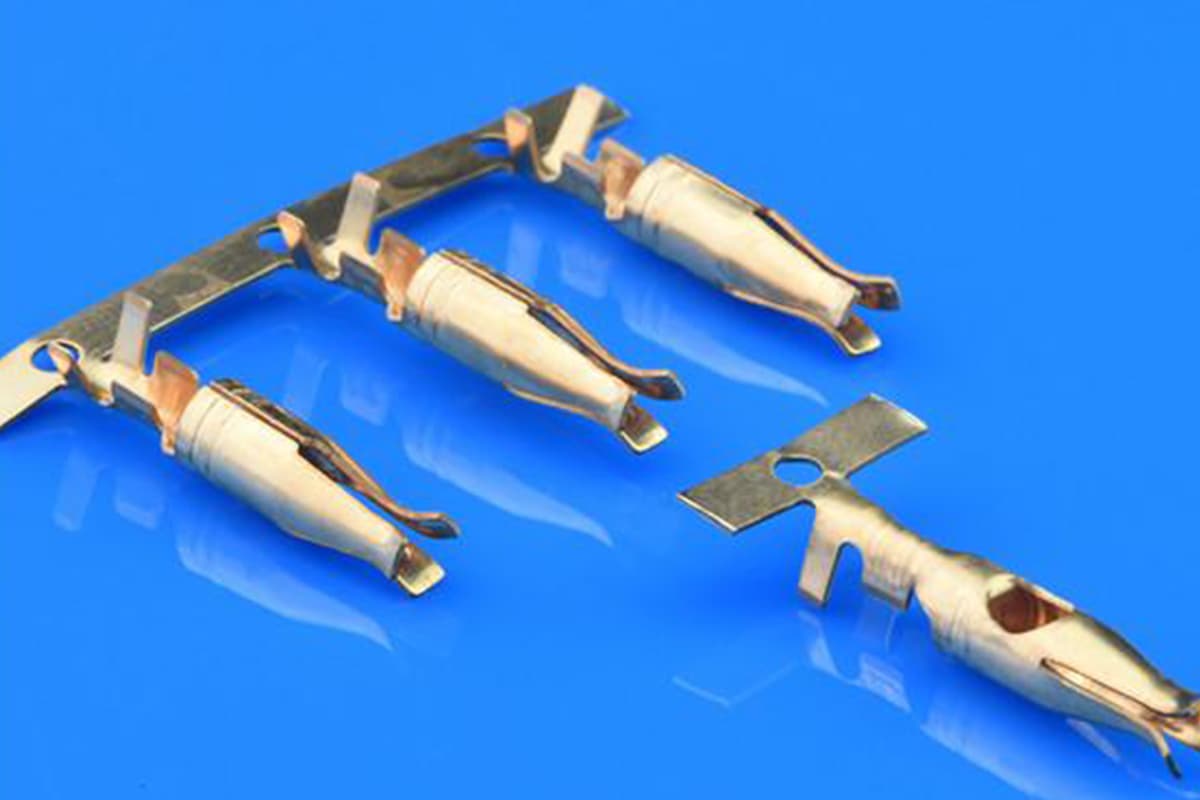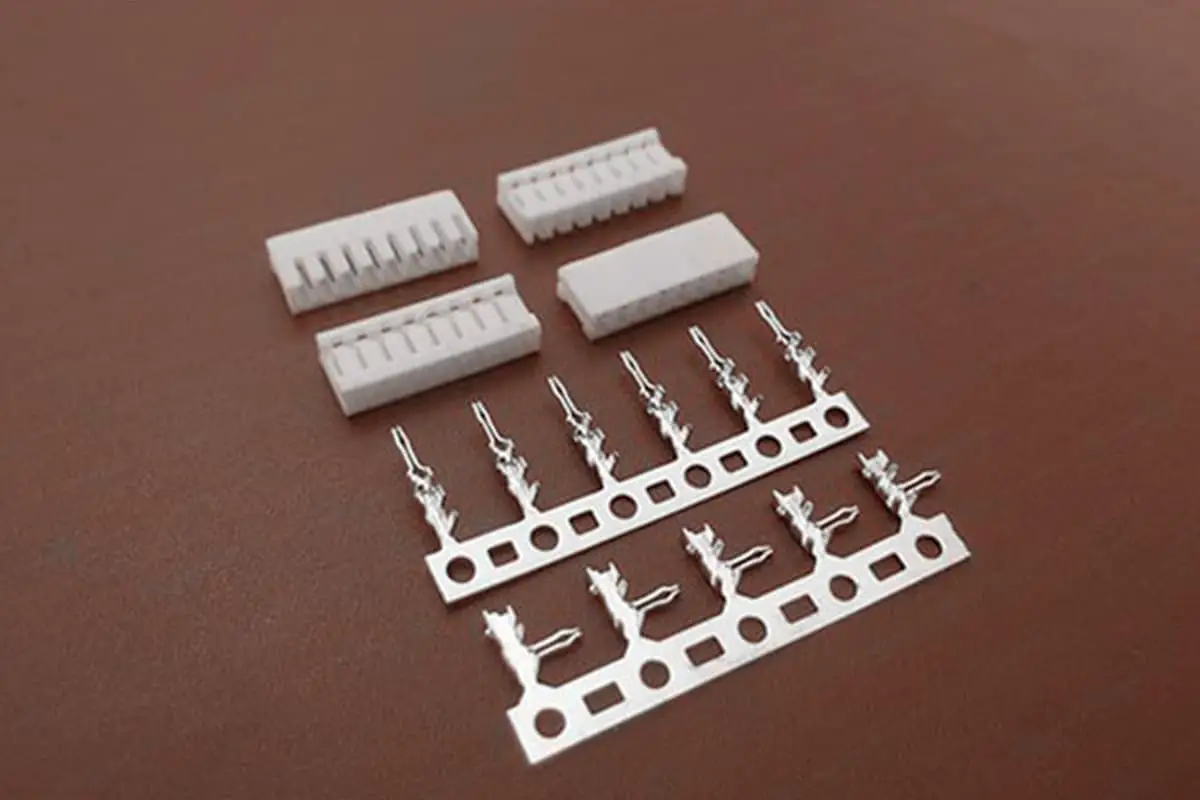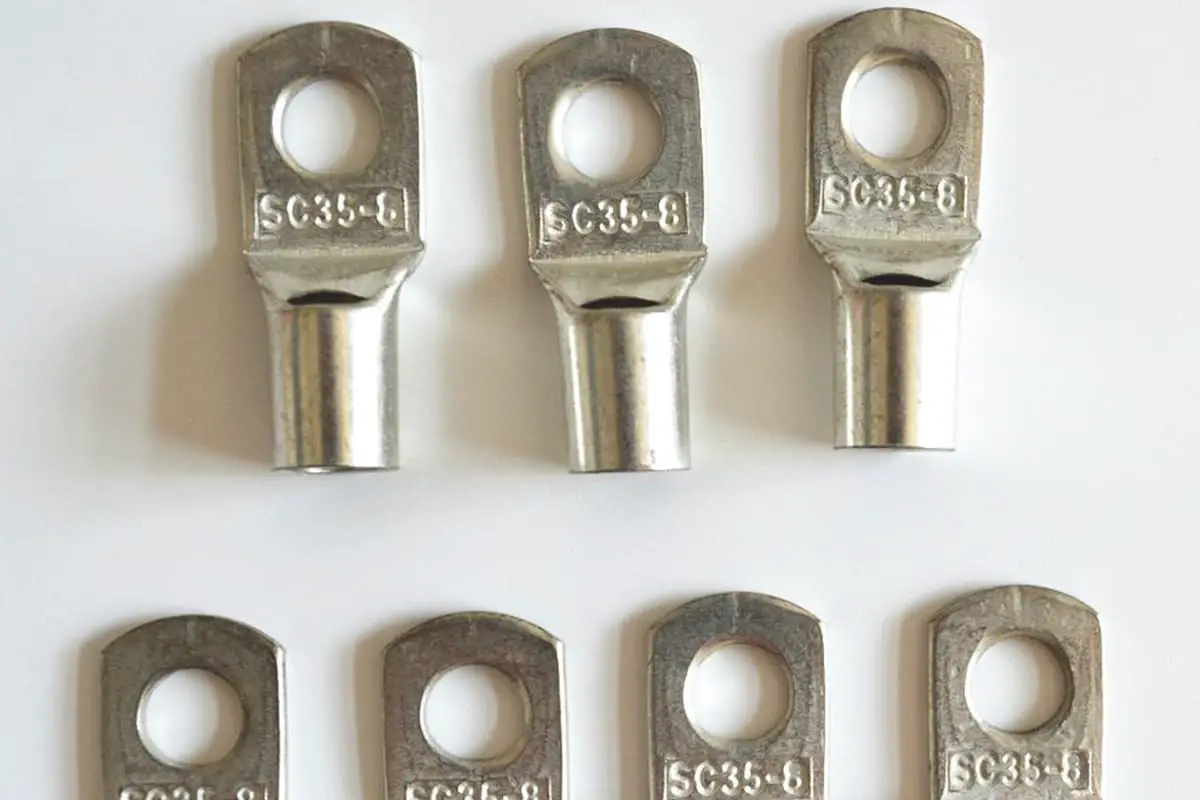I. Definition
Electroplating is a type of metal electrodeposition process. It involves reducing the discharge of simple metal ions or complex ions through electrochemical methods on the surface of a solid (conductor or semiconductor), resulting in the adhesion of metal atoms to the electrode surface to form a metallic layer.
II. Purpose
Electroplating alters the surface properties of solids, thereby altering their appearance, increasing corrosion resistance, wear resistance and hardness, and imparting special optical, electrical, magnetic and thermal surface properties.
III. Introduction to Terminal Electroplating
Most electronic connectors and terminals undergo surface treatment, typically electroplating, for two main reasons: first, to protect the terminal spring material from corrosion; second, optimize the performance of the terminal surface by establishing and maintaining the contact interface between the terminals, especially in terms of film layer control. In other words, to facilitate metal-to-metal contact.

Corrosion Prevention:
Most connector springs are made of copper alloy, which can corrode in the operating environment, such as oxidation and sulfidation. Terminal electroplating isolates the spring from the environment, preventing corrosion. Electroplating materials must be resistant to corrosion, at least within the application environment.
Surface Optimization:
Optimization of terminal surface properties can be achieved in two ways. One is through connector design, establishing and maintaining a stable contact interface. The other is by establishing metallic contact, requiring that any surface film is non-existent or breaks upon insertion. The distinction between having no film and film rupture differentiates precious metal plating from non-precious metal plating.
The coating of precious metals, such as gold, palladium and their alloys, is inert and has no inherent film layer. Therefore, for these surface treatments, metallic contact is “automatic”. The consideration then becomes how to maintain the nobility of the terminal surface, protecting it from external factors such as contamination, substrate diffusion and terminal corrosion.
The coating of non-precious metals, particularly tin and lead and their alloys, is covered by an oxide film that breaks easily after insertion, thus establishing an area of metallic contact.
(1) Precious metal terminal coating

Precious metal end plating involves covering the underlying surface, typically nickel, with a precious metal. Standard connector coating thicknesses are 15 to 50 microns for gold and 50 to 100 microns for nickel. The most commonly used precious metals for plating are gold, palladium and their alloys.
Gold is the ideal plating material due to its excellent conductivity and thermal properties, as well as its resistance to corrosion in any environment. Due to these advantages, gold plating is predominantly used in connectors for applications requiring high reliability, although gold is expensive.
Palladium, also a precious metal, has greater strength, lower heat transfer and lower corrosion resistance compared to gold, but offers superior wear resistance. Palladium-nickel alloys (80-20 ratio) are generally used in connector terminals.
When designing precious metal plating, the following factors should be considered:
The. Porosity
During the electroplating process, gold nucleates on numerous contaminants on the exposed surface. These nuclei continue to grow and spread across the surface, eventually colliding and completely covering the surface, resulting in a porous coating.
The porosity of a gold layer is related to its thickness. Below 15 microns, porosity increases rapidly, while above 50 microns, porosity remains low and the rate of decrease is negligible. This explains why the thickness of the precious metal coating is typically in the range of 15 to 50 microns.
Porosity is also related to substrate defects such as inclusions, lamination, stamp marks, inadequate cleaning after stamping and incorrect lubrication.
B. Wear
Wear on the plated surface can lead to exposure of the base material. The wear or longevity of the coated surface depends on two characteristics of the surface treatment: the coefficient of friction and hardness. As the hardness increases and the coefficient of friction decreases, the service life of the surface treatment improves.
Electroplated gold is generally hard gold, containing hardening activators such as cobalt (Co), the most common hardening agent, which increases the wear resistance of gold. Choosing palladium-nickel plating can significantly improve the wear resistance and longevity of precious metal plating.
Typically, a 3 micron gold layer is applied over a 20-30 micron palladium-nickel alloy, providing good conductivity and high durability. Additionally, a nickel bottom layer is often used to further extend service life.
w. Nickel bottom layer
The nickel back layer is a primary consideration in precious metal plating, providing several important functions to ensure the integrity of the terminal contact interface.
By providing an effective barrier layer across a positively oxidized surface, nickel reduces the potential for porosity corrosion and provides a rigid support layer beneath the precious metal coating, thereby increasing the coating's service life. What is the appropriate thickness for this layer?
The thicker the bottom nickel layer, the less wear, but in terms of cost and control of surface roughness, a thickness of 50-100 microns is generally chosen.
(2) Non-precious metal plating
The coating of non-precious metals differs from that of precious metals in that it always involves a certain number of layers of surface film. For connectors that aim to provide and maintain a metallic contact interface, the presence of these films must be taken into consideration.
Typically, for non-precious metal coatings, a high contact force is required to break the film, thus ensuring the integrity of the terminal contact interface. The scrubbing action is also crucial for terminal surfaces with film layers.
There are three types of non-gold surface treatments in terminal plating: tin (tin-lead alloy), silver and nickel. Tin is most commonly used, silver excels in high current applications, and nickel is reserved for high temperature environments.
The. Tin surface treatment
Tin also refers to tin-lead alloys, especially tin 93-lead alloy 3.
The use of tin surface treatment arises from the fact that the tin oxide film is easily broken. A tin coating will have a layer of hard, thin, brittle oxide film on its surface. Below the oxide layer is soft tin. When a positive force acts on the film, the tin oxide, being thin, cannot support the load and, due to its fragility, cracks easily.
Under these conditions, the charge is transferred to the tin layer, which, being soft and malleable, flows easily under pressure. As the tin flows, the cracks in the oxide increase. Through these cracks and the interlayer, tin is squeezed to the surface, providing metallic contact. In tin-lead alloys, the role of lead is to reduce the formation of tin whiskers.
Tin whiskers form as monocrystalline wires on the surface of plated tin under tension, which can cause short circuits between terminals. Adding 2% or more lead can reduce whisker formation. Another common tin-lead alloy ratio is 60:40, similar to the solder composition ratio (63:37), used primarily in connectors that require soldering.
However, recent legislation increasingly requires the reduction of lead content in electronic and electrical products, leading to an increase in demand for lead-free coatings such as pure tin, tin/copper and tin/silver. The growth of tin whiskers can be slowed by coating a layer of nickel between the copper and tin layers or using a dull, non-shiny tin surface.
B. Silver surface coating
Silver is considered a non-precious metal surface treatment because it reacts with sulfur and chlorine to form a sulfide film. This sulfide film acts as a semiconductor and can exhibit diode-like characteristics.
Silver is also soft, comparable to soft gold. Because sulfide is not easily broken, silver is free from fretting corrosion. With excellent electrical and thermal conductivity, silver does not melt under high currents, making it an excellent choice for high-current terminal surface treatments.
(3) Terminal Lubrication
Lubrication performs different functions depending on the surface treatment of the terminal, serving mainly two functions: reducing the coefficient of friction and providing environmental isolation.
Reducing the coefficient of friction brings two benefits: first, it reduces the insertion force required for the connectors; secondly, it extends the life of the connector by minimizing wear. Terminal lubrication can form a protective layer that prevents or delays environmental degradation of the contact interface, thereby providing insulation.
Typically, for surface treatments of precious metals, lubrication is used to reduce friction and increase connector longevity. In the case of tin surface treatments, it provides environmental insulation to prevent contact corrosion. Although lubricants can be applied in the post-galvanizing process, this is only an additional measure.
For connectors that need to be soldered onto PCB boards, the soldering cleaning process can remove the lubricant. Lubricants attract dust, which, in a dusty environment, can lead to increased electrical resistance and reduced service life. Finally, the temperature resistance of lubricants can also limit their application.
(4) Summary of Terminal Surface Treatments
The precious metal coating is assumed to be placed on a 50 micron nickel base. Gold is the most common material, with thickness varying according to service life requirements, but is susceptible to porosity issues.
Palladium is not recommended for situations requiring weldability protection. Silver is sensitive to tarnish and migration, mainly used in power connectors, but its service life can be significantly improved through lubrication. Tin has excellent environmental stability, but mechanical stability must be guaranteed.
4. The ten strict rules of tin plating for terminals

Tin materials or tin alloys are among the best options for terminal electroplating, offering an economical solution with low contact resistance and excellent solderability. These materials meet the performance requirements of various applications, making them an ideal replacement for gold and other precious metals in plating.
Below are ten constant rules, although as new applications emerge, more principles wait to be discovered.
- When using tin-plated materials, ensure that the male and female terminals maintain good mechanical stability once connected.
Avoid using tinned terminals in vibrant environments. Differential thermal expansion (DTE) between end metals can lead to fretting corrosion within a range of 10 to 200 micrometers, damaging the coating, exposing the base material, and significantly increasing contact resistance due to oxidation.
- To maintain stable contact between the tinned terminals, apply a minimum force of 100 grams in the axial direction.
- Tinned terminals require lubrication.
Following the second rule, with increasing axial pressure, adequate lubrication becomes necessary to reduce friction. The male and female terminals must be lubricated, or at least one end.
- Tinned materials are not recommended for continuous high temperature environments.
High temperatures accelerate the formation of intermetallic compounds between copper and tin, resulting in brittle and hard interlayers that affect functionality. A layer of nickel plating is recommended as an intermediate, since nickel-tin intermetallic compounds grow more slowly.
- Various tinning processes have minimal impact on electrical performance.
The shiny tin coating is aesthetically pleasing; matte tin must maintain a clean surface so as not to affect solderability. Brass tin plating must include a nickel underlayer to prevent loss of zinc from the base material, which would degrade solderability.
- Look for a tin thickness between 100 and 300 microinches.
Thicknesses below 100 microinches are typically used for cost-sensitive products with lower weldability requirements.
- The combination of tin-plated and gold-plated terminals is not recommended.
This practice leads to increased oxidation and corrosion. Tin migrates to the surface of the gold, eventually causing a build-up of tin oxides on the harder gold substrate. It is more difficult to break through the tin oxide in gold than to penetrate directly into the tin oxide layer. However, fretting corrosion between tinplating and silverplating is similar to that of terminals coated with tin at both ends.
- It is advisable to initially connect the tinned terminals two or three times.
This procedure removes the oxide layer from the tin plating, ensuring reliable metal-to-metal contact. This is also recommended for ZIF (Zero Insertion Force) terminals.
- Tin-plated or tin-alloy terminals are not suitable for applications with frequent circuit interruptions.
Due to the low melting point of tin, it is not advisable to use these materials in situations prone to arc formation, such as contact points.
- Tinned terminals are best used in dry circuits and applications with moderate requirements.
























































